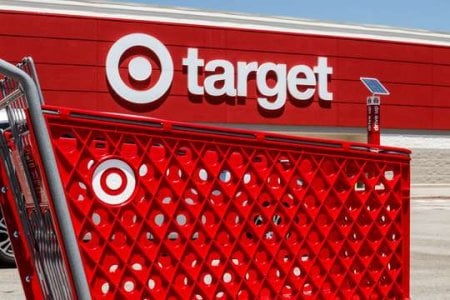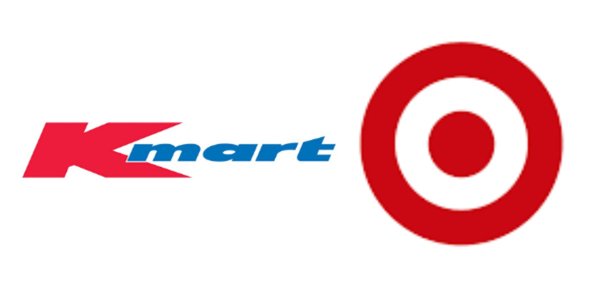Will Kmart and Target's $10 billion merger make prices plummet?
In retail, Kmart and Target have notably been two household names that have brought joy, convenience, and worthwhile deals to the thrifty Australian shopper.
They've each carved their niche and stood up against stiff competition, winning over customers with their unique brand appeal.
But now, as people are always looking for a good bargain, an announcement has us doing a double-take.
We're talking about the shocking merger of Kmart and Target.
Now you may wonder, what will this mean for our favourite shopping destinations? Are lower prices on the horizon?
According to one expert, not only will prices dip, but there'll also be a wider range of products.
This would indeed be a significant win for thrifty customers who appreciate quality at affordable prices.
Recently, the news that Wesfarmers, the parent company of Kmart and Target, plans to amalgamate these retail powerhouses into a single $10 billion retail giant came out.
Structurally, some changes are on the table.
Kmart’s Chief Executive John Gualtieri will helm the day-to-day operations of this revamped retail titan, while Target's Managing Director Richard Pearson will don a new role within Wesfarmers.
Dr Gary Mortimer of the Queensland University of Technology, an established retail expert, believes this merger is a boon for consumers. He thinks this will lead to a greater selection and more affordable prices for the favourite items we've always sought.
'Customers won't notice. The brands will still be operated as two separate brands,' Dr Mortimer assured us.
'You’ll still have your favourite Kmart store, the Target store will remain mostly the same. The biggest change customers should expect is lower prices over the next 12 to 24 months.'
Interestingly, the retail expert hints that product duplication, a notable past issue, will be curtailed.
Remember those indistinguishable $12 toasters at both stores that had you in quite a quandary?
Dr Mortimer indicated those days could soon be history.
This removal of duplicate items should increase efficiency and drive down costs, leading to lower prices.
In the digital age, customer reactions on social media have become a significant barometer of public sentiment.
The news of the merger elicited a mixed bag of emotions.
Some customers responded with humorous new names such as ‘Tarmart’ or ‘Karget’, while others expressed concern about the future of their favourite products.
One customer shared on social media, 'As long as they keep their prices low, I’m happy with that.'
Others expressed that they are fine with the merger as long as the products are ‘Target’ quality.

In recent years, Target has been struggling, and there were even speculations about the Target brand being axed altogether.
In 2021, Wesfarmers announced that 75 Target stores closed permanently, and 44 Target stores were rebranded as Kmart or 'KHub'.
Dr Mortimer also predicted that the stronger brand, Kmart, would likely overshadow the weaker brand, Target, as the merger moves forward.
Kmart Group Managing Director Ian Bailey said, ‘Kmart and Target are both strong businesses. I don’t see us doing this from a position of weakness. It’s quite the opposite. I’d say we’re strong, but I think there’s an opportunity to really capitalise on this time and find ways to continue to deliver better value for customers.’

From what we can glean, this shift in Australia's retail sector promises an enriched shopping experience with better prices and more choices.
Change, though often daunting, can pave the way for exciting potentialities.
So, dust off those shopping lists and keep an eye out for new bargains and valuable finds in the coming months. Happy shopping!
Members, do you think this will positively impact the shopping experience and lead to better prices for consumers? Share your opinions and expectations about the Kmart and Target merger!
They've each carved their niche and stood up against stiff competition, winning over customers with their unique brand appeal.
But now, as people are always looking for a good bargain, an announcement has us doing a double-take.
We're talking about the shocking merger of Kmart and Target.
Now you may wonder, what will this mean for our favourite shopping destinations? Are lower prices on the horizon?
According to one expert, not only will prices dip, but there'll also be a wider range of products.
This would indeed be a significant win for thrifty customers who appreciate quality at affordable prices.
Recently, the news that Wesfarmers, the parent company of Kmart and Target, plans to amalgamate these retail powerhouses into a single $10 billion retail giant came out.
Structurally, some changes are on the table.
Kmart’s Chief Executive John Gualtieri will helm the day-to-day operations of this revamped retail titan, while Target's Managing Director Richard Pearson will don a new role within Wesfarmers.
Dr Gary Mortimer of the Queensland University of Technology, an established retail expert, believes this merger is a boon for consumers. He thinks this will lead to a greater selection and more affordable prices for the favourite items we've always sought.
'Customers won't notice. The brands will still be operated as two separate brands,' Dr Mortimer assured us.
'You’ll still have your favourite Kmart store, the Target store will remain mostly the same. The biggest change customers should expect is lower prices over the next 12 to 24 months.'
Interestingly, the retail expert hints that product duplication, a notable past issue, will be curtailed.
Remember those indistinguishable $12 toasters at both stores that had you in quite a quandary?
Dr Mortimer indicated those days could soon be history.
This removal of duplicate items should increase efficiency and drive down costs, leading to lower prices.
In the digital age, customer reactions on social media have become a significant barometer of public sentiment.
The news of the merger elicited a mixed bag of emotions.
Some customers responded with humorous new names such as ‘Tarmart’ or ‘Karget’, while others expressed concern about the future of their favourite products.
One customer shared on social media, 'As long as they keep their prices low, I’m happy with that.'
Others expressed that they are fine with the merger as long as the products are ‘Target’ quality.
Target’s Cannibalisation

As part of the merger, Target is undergoing a transformation to become a more up-market brand. This strategic move aims to position Target differently in the market and offer a more elevated shopping experience to its customers. Source: Shutterstock
In recent years, Target has been struggling, and there were even speculations about the Target brand being axed altogether.
In 2021, Wesfarmers announced that 75 Target stores closed permanently, and 44 Target stores were rebranded as Kmart or 'KHub'.
Dr Mortimer also predicted that the stronger brand, Kmart, would likely overshadow the weaker brand, Target, as the merger moves forward.
Kmart Group Managing Director Ian Bailey said, ‘Kmart and Target are both strong businesses. I don’t see us doing this from a position of weakness. It’s quite the opposite. I’d say we’re strong, but I think there’s an opportunity to really capitalise on this time and find ways to continue to deliver better value for customers.’
Key Takeaways
- Target has been merged into Kmart, creating a dual-brand retail giant valued at approximately $10 billion.
- A retail expert predicts the merger will result in more affordable products and a wider range.
- Existing Kmart and Target stores are expected to mostly remain the same with less duplication of products.
- The merger is predicted to lower prices over the next 12 to 24 months.
From what we can glean, this shift in Australia's retail sector promises an enriched shopping experience with better prices and more choices.
Change, though often daunting, can pave the way for exciting potentialities.
So, dust off those shopping lists and keep an eye out for new bargains and valuable finds in the coming months. Happy shopping!
Members, do you think this will positively impact the shopping experience and lead to better prices for consumers? Share your opinions and expectations about the Kmart and Target merger!








